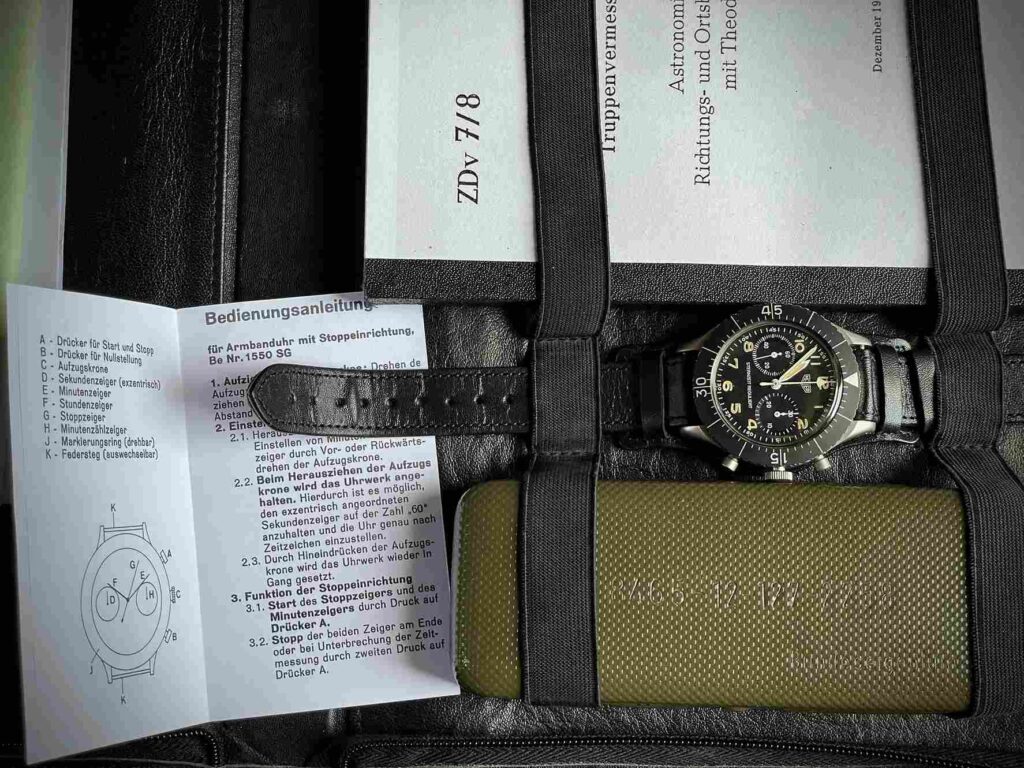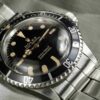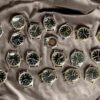The Heuer Bundeswehr “Sternzeit Reguliert” Ref. 1551SGSZ Full Set – Explained
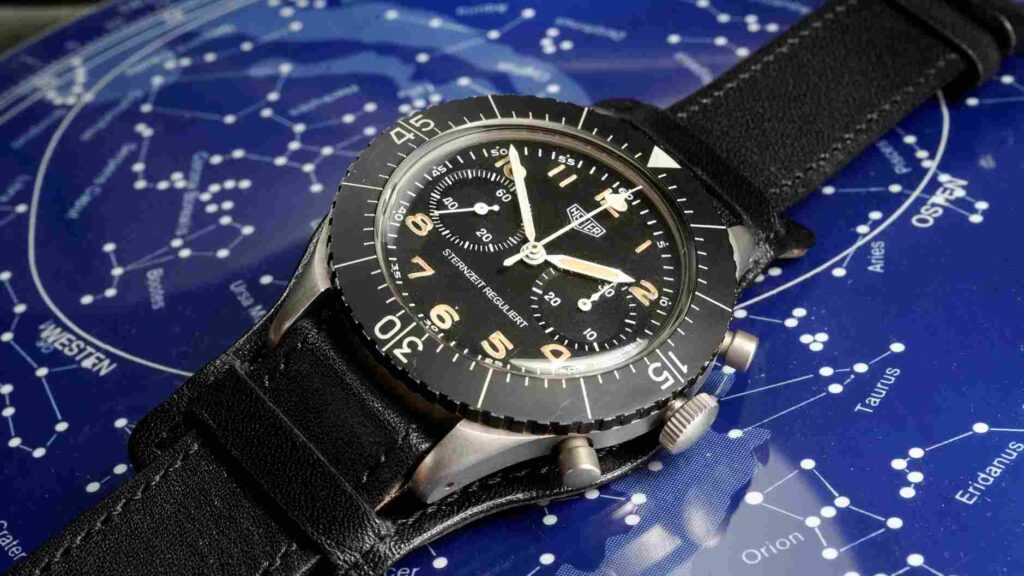
Among the military chronographs produced in the post-war era, few carry the scientific depth and rarity of the Heuer Bundeswehr “Sternzeit Reguliert” ref. 1551SGSZ. Conceived for an extremely specialized purpose within the Bundeswehr’s artillery and geodetic divisions, this chronograph was not a pilot’s instrument or a stopwatch for racing circuits.
It was a portable astronomical tool, designed to measure time not according to the Sun, but according to the stars.

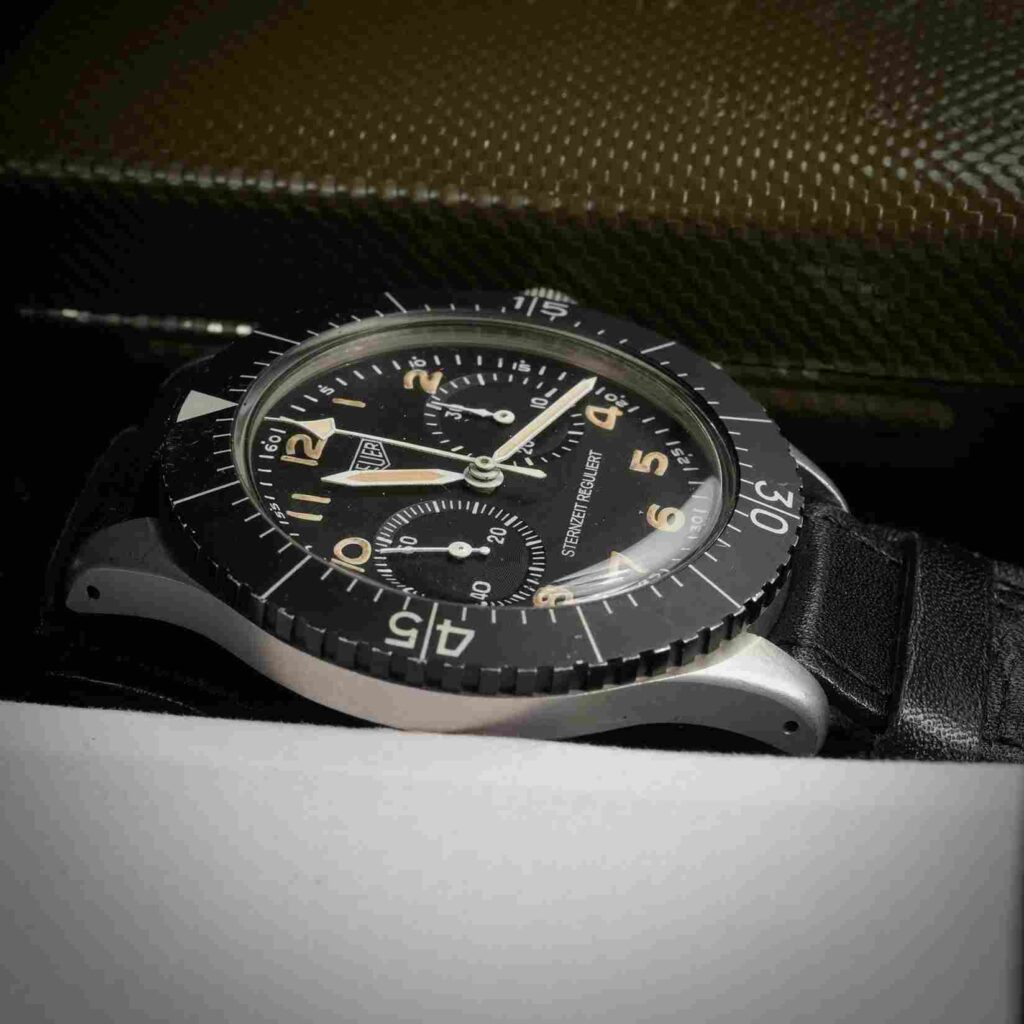
In both concept and execution, it represents one of the most fascinating intersections between precision watchmaking, astrophysics, and military engineering.
Historical Background
The story of the Sternzeit Reguliert begins in the 1960s, when Heuer-Leonidas SA supplied robust, flyback chronographs to the West German Air Force under military contracts.
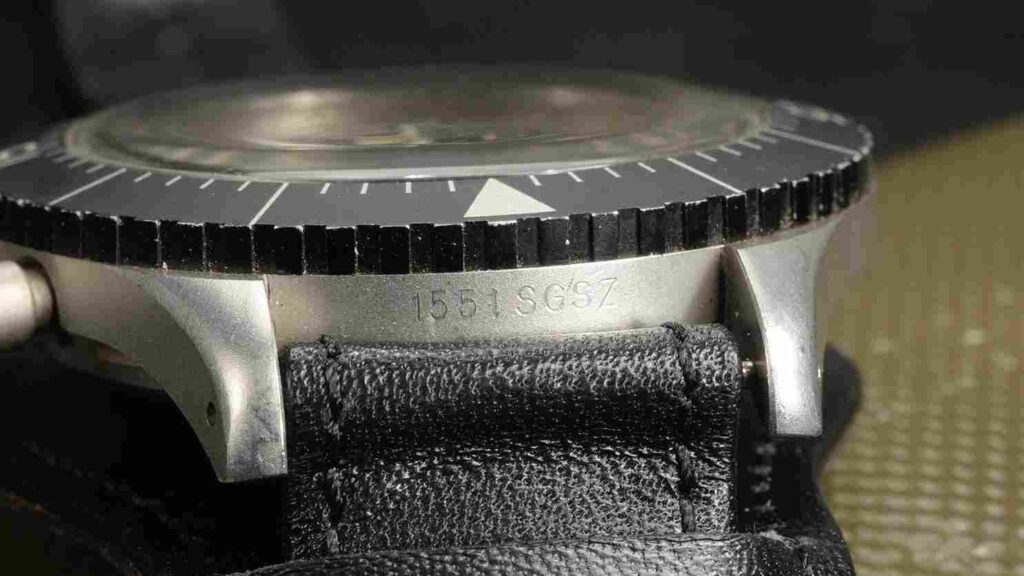
These standard models, known as Heuer Bundeswehr Chronographs, were powered by the Valjoux 230 movement and designated with NATO Stock Numbers (NSN) identifying them as government-issued equipment.
The Sternzeit Reguliert variant, however, stood apart. Produced in very limited numbers—most estimates suggest between 100 and 150 pieces—it was designed not for aviators but for artillery officers, surveyors, and engineers within the Bundeswehr’s Geophysical and Artillery Corps.

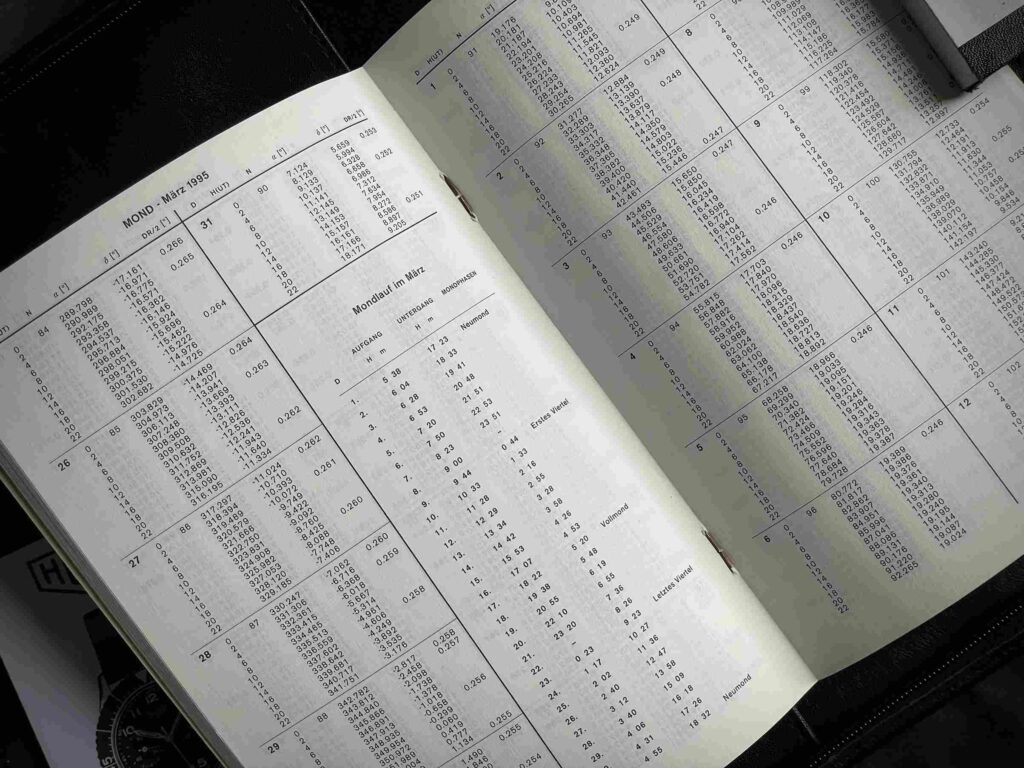
The name engraved on its dial, “Sternzeit Reguliert,” literally means “regulated to star time.”
This simple phrase encapsulates the chronograph’s unique purpose: it was synchronized not to solar time, as ordinary watches are, but to sidereal time, the time scale astronomers use to measure Earth’s rotation relative to distant stars rather than the Sun.
Sidereal time runs slightly faster than solar time. A sidereal day lasts exactly 23 hours, 56 minutes, and 4.1 seconds—the time it takes Earth to complete one full rotation relative to the fixed stars.
For artillery calculations and geodesic surveys, this distinction mattered. By tracking sidereal time, engineers could align their instruments precisely with celestial coordinates, ensuring that trajectories and directional bearings were astronomically true.
The Sternzeit Reguliertchronograph was therefore not a conventional field watch but a scientific instrument adapted for military use in an era just before digital targeting and satellite navigation rendered such methods obsolete.
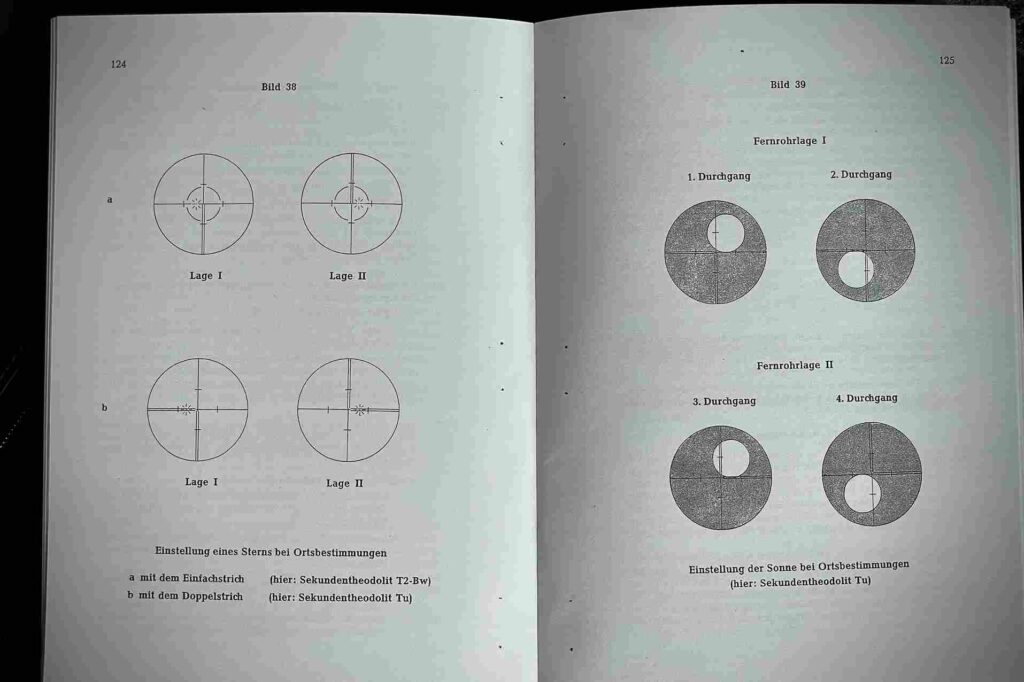
The Case
The Heuer Bundeswehr Sternzeit Reguliert has the same stainless-steel clamshell case used on standard Bund models, measuring 42 mm in diameter excluding the crown. Built for durability and field serviceability, the case is composed of two interlocking halves prortected by a plastic ring under the glass, and locked by four screws located under the lugs which push the lower case against the outer case and the glass, providing protection against moisture.
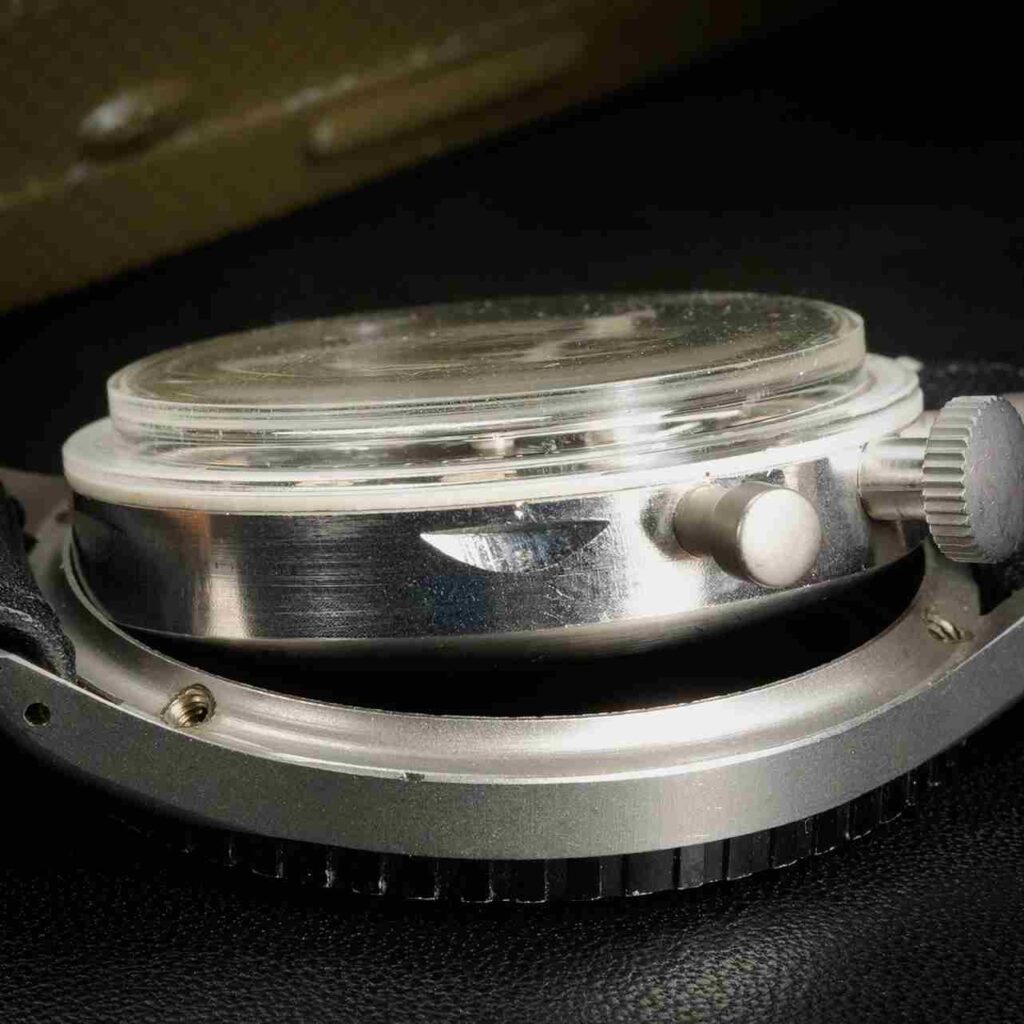
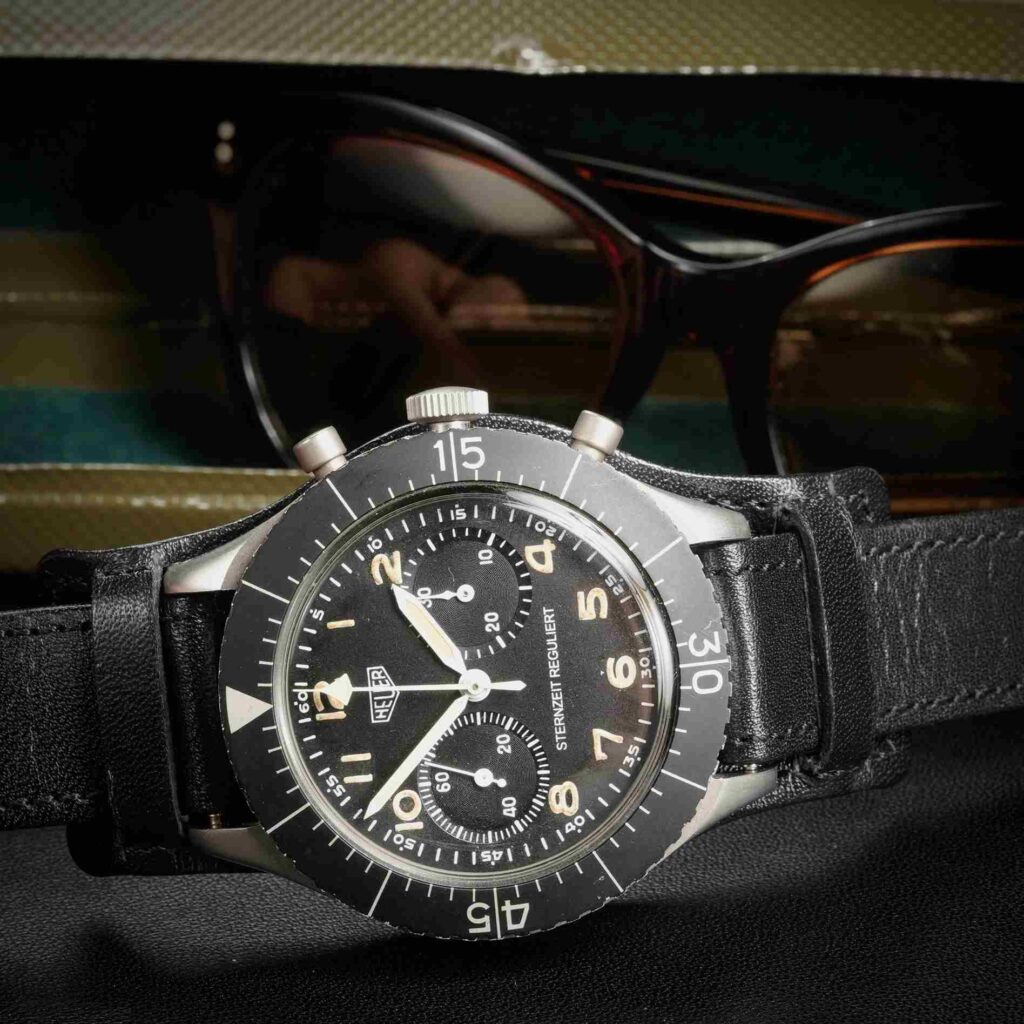
Each military-issue case is engraved with Bundeswehr contract markings (outer caseback) and serial numbers (between the lugs), including its distinct NSN – Nato Serial Number – 6645-12- 148-2298, which differs from that of ordinary Bundeswehr chronographs.
The aluminum bezel is bi-directional. The sand blasted surfaces, robust pushers, and functional design language are typical of Heuer’s military chronographs of the era—unadorned, purpose- driven, and quality engineered.
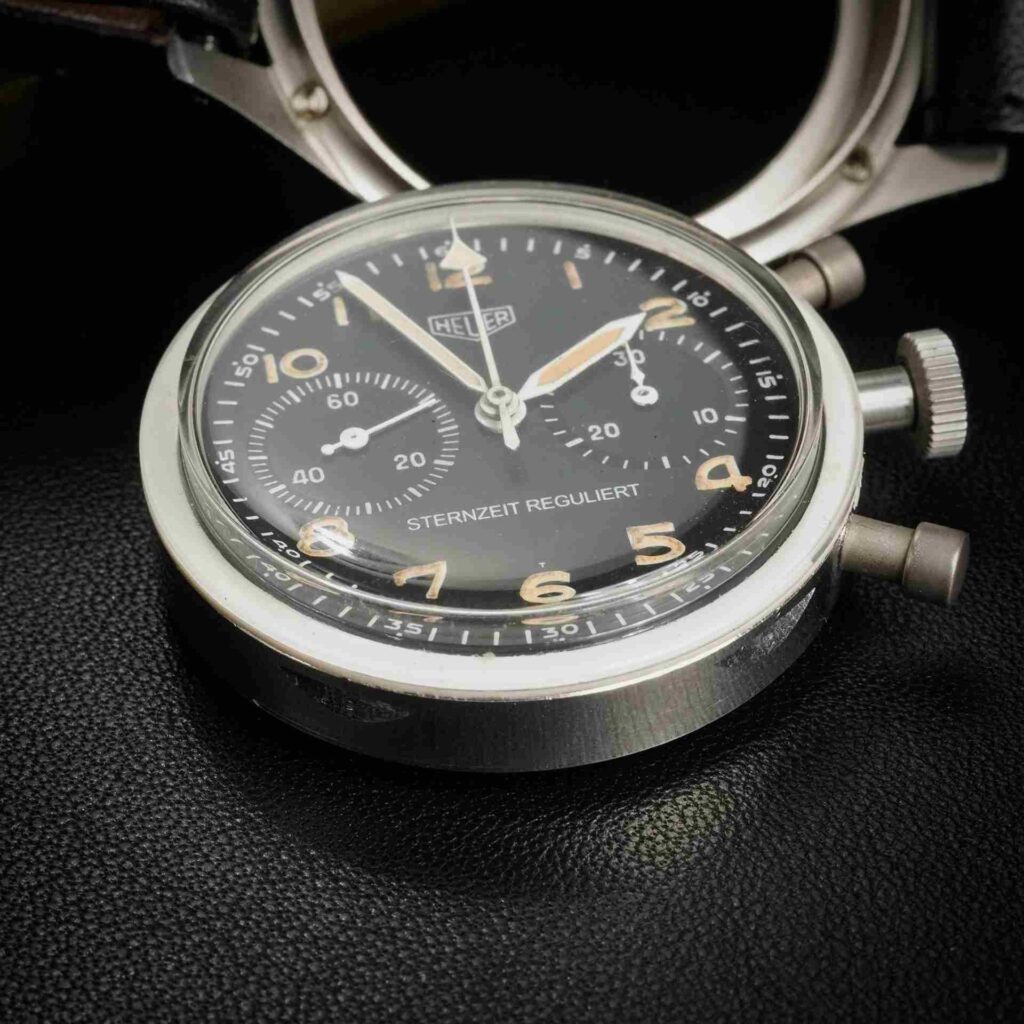
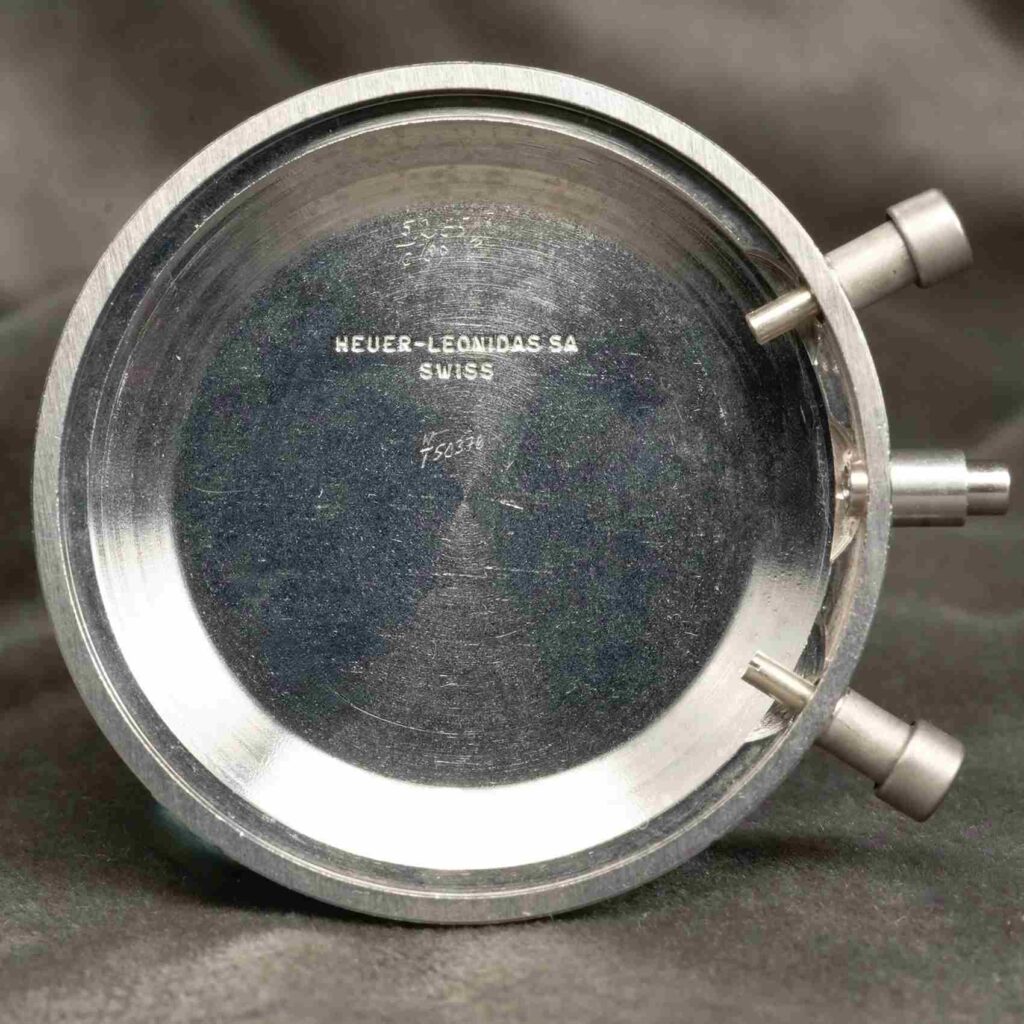
The original plexiglass crystal has a “talon” a rim which allows for its precise positioning within the case.
The Dial
At the heart of this model’s fascination lies its black matte dial with the Sternzeit Reguliert inscription. The dial mirrors that of the standard Bundeswehr chronograph—large Arabic numerals, luminous hands, subsidiary registers for running seconds and 30-minute chronograph totalizer.
The luminous material, originally tritium, has aged evenly to a warm tone, the dial’s layout is designed for immediate legibility in low-light conditions, an essential feature for a military chronograph. Unlike many dials that were refinished or replaced during service, original Sternzeit dials are rare. The one shown here displays an even, light patina—evidence of unrestored originality.
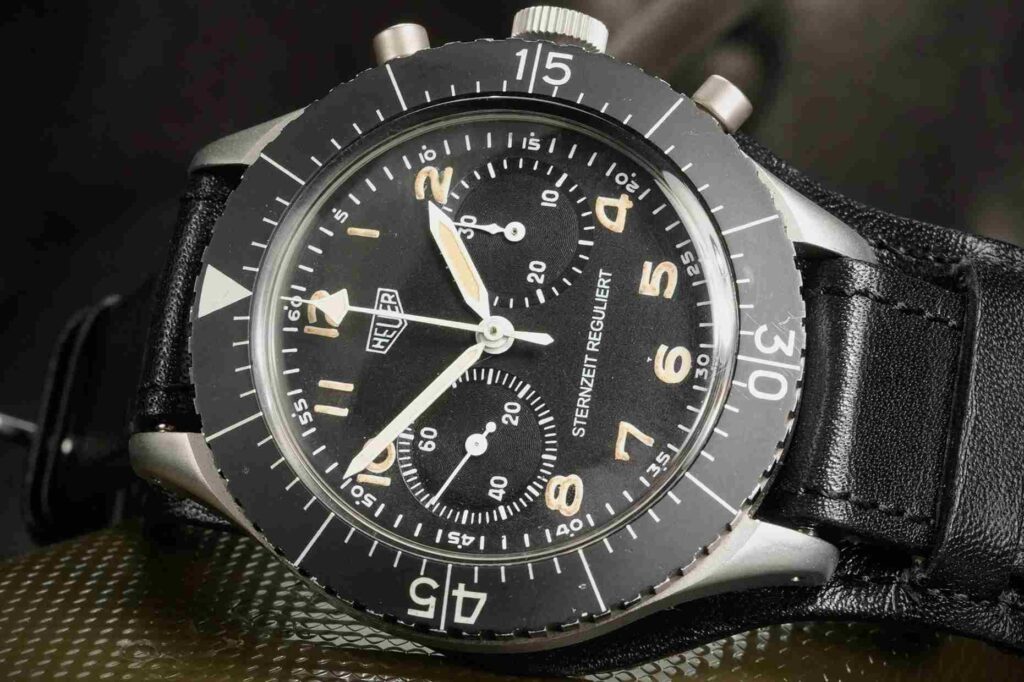
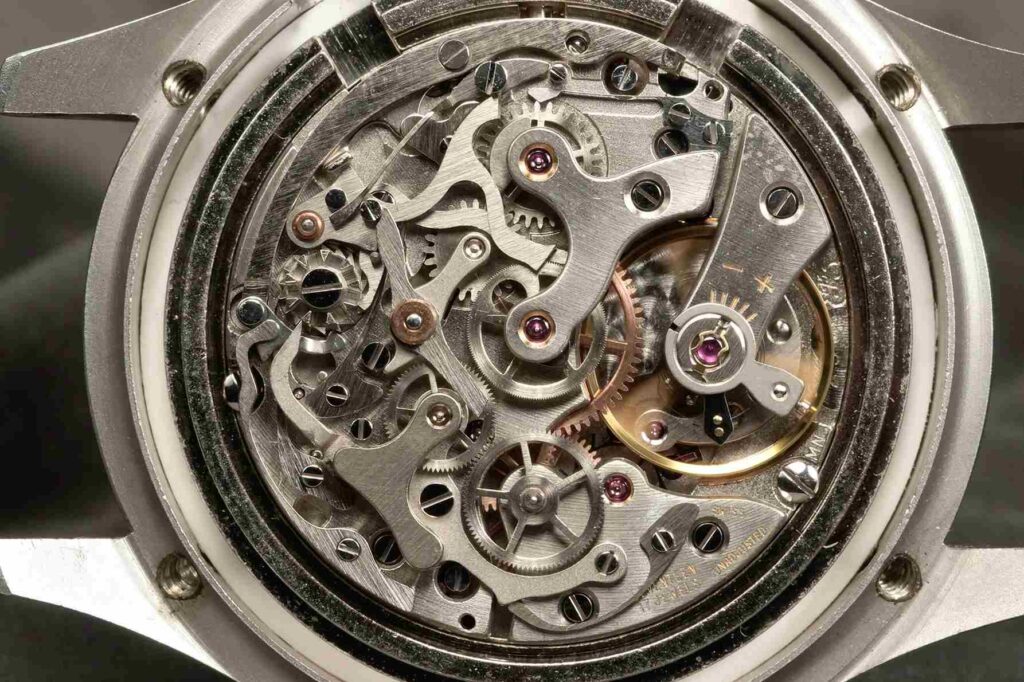
The Movement
Powering the Sternzeit Reguliert is the Valjoux 230, a hand-wound, column-wheel flyback chronograph calibre. Introduced in the mid-20th century, the Valjoux 230 became a benchmark for precision and reliability in professional timing instruments.
The flyback function allows the chronograph hand to be reset and restarted with a single push— an essential feature where timing needed to be adjusted rapidly without losing continuity. In the Sternzeit Reguliert the movement was carefully modified and regulated for sidereal time- keping.
Use and Purpose
The Sternzeit Reguliert was not a navigational tool for pilots or a stopwatch for mechanics—it was a mathematical and astronomical reference chronograph. It worked in conjunction with a theodolite, a precision optical instrument used for measuring angles in surveying and artillery positioning.
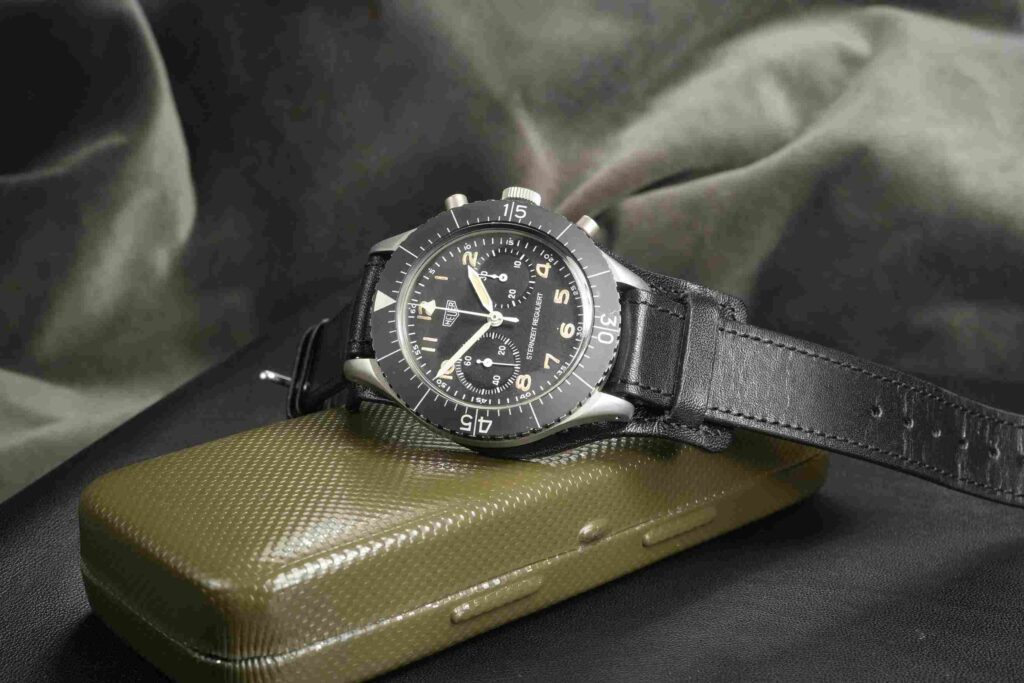
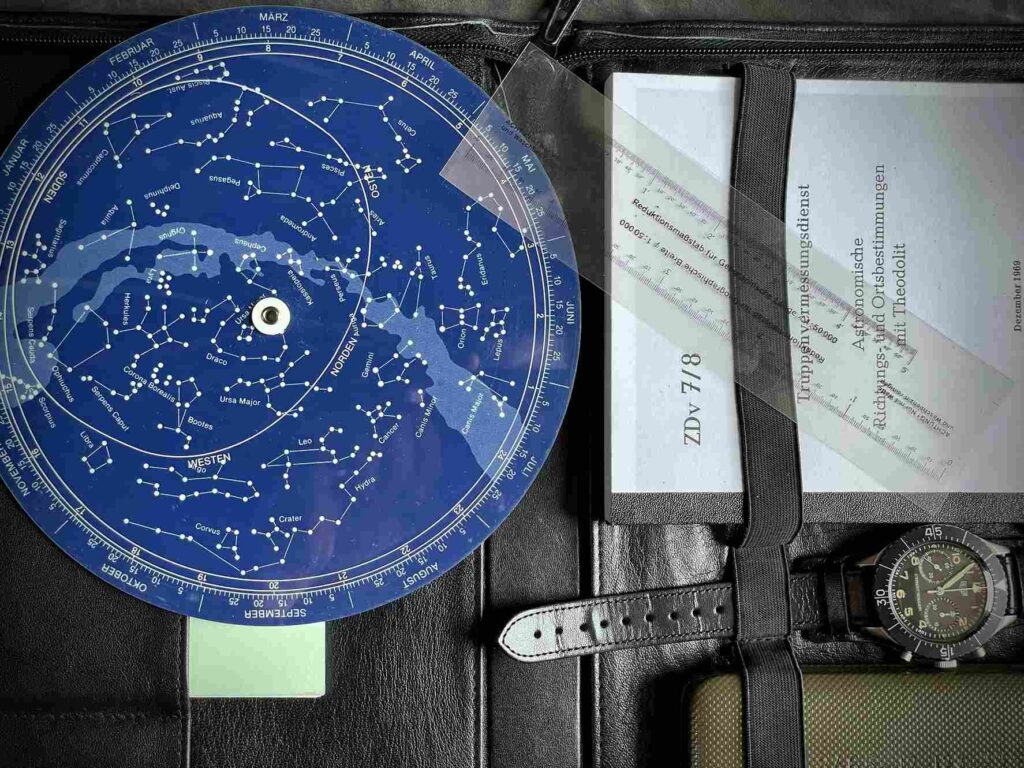
By pairing the chronograph’s sidereal time reading with celestial data from military star charts, officers could determine true north, launch angles, and azimuthal coordinates for long-range firing or geodesic mapping.
These calculations required specialized training. Only a small cadre of Bundeswehr artillery engineers and military geodesists were qualified to use this equipment.
The system’s accuracy depended on synchronization between the chronograph, the theodolite, and astronomical tables—making it both technically demanding and time-intensive.
With the introduction of satellite navigation and digital targeting systems in the late 20th century, such analog methods quickly became obsolete. Consequently, the Sternzeit Reguliert project was discontinued, leaving only a handful of surviving examples.
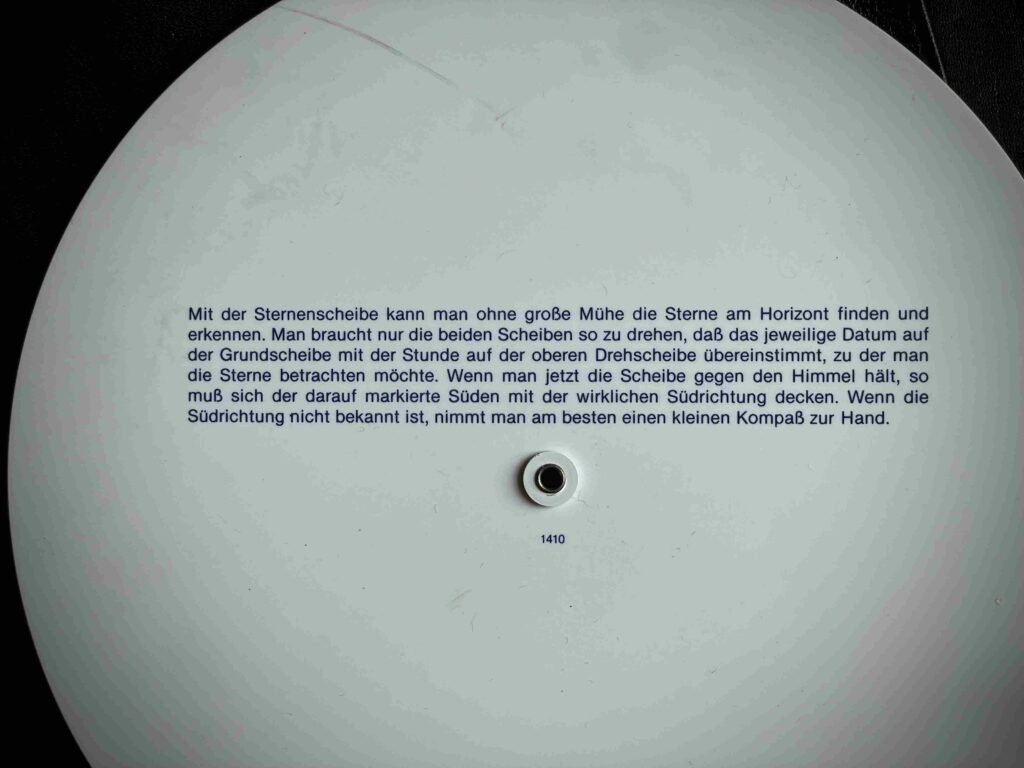
The Complete Bundeswehr Set
Most surviving Heuer Bundeswehr chronographs are watches alone, while this one is complete with its Bundeswehr-issue set, a comprehensive field kit illustrating how the watch was actually used. Each component has its own military inventory number and purpose:
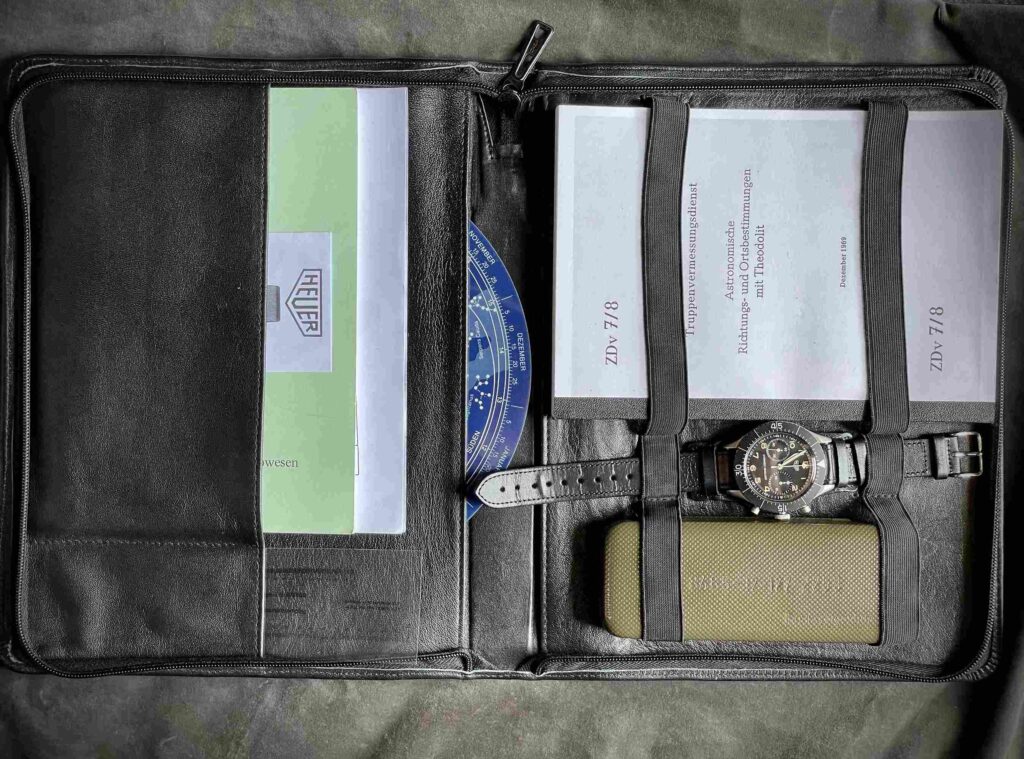
• The leather document pouch (NSN 6675-12-308-6782) was designed to hold the chronograph, instruction manuals, and the kit below.
• The supply sheet (ANLBLAAN) recorded the distribution of the kit to individual artillery units.
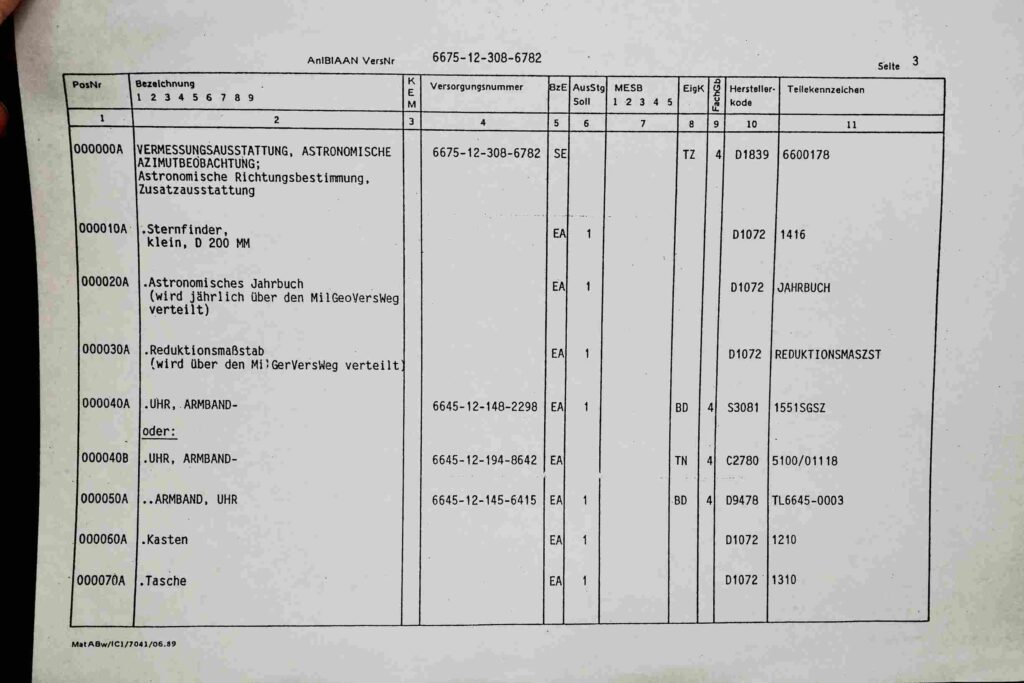
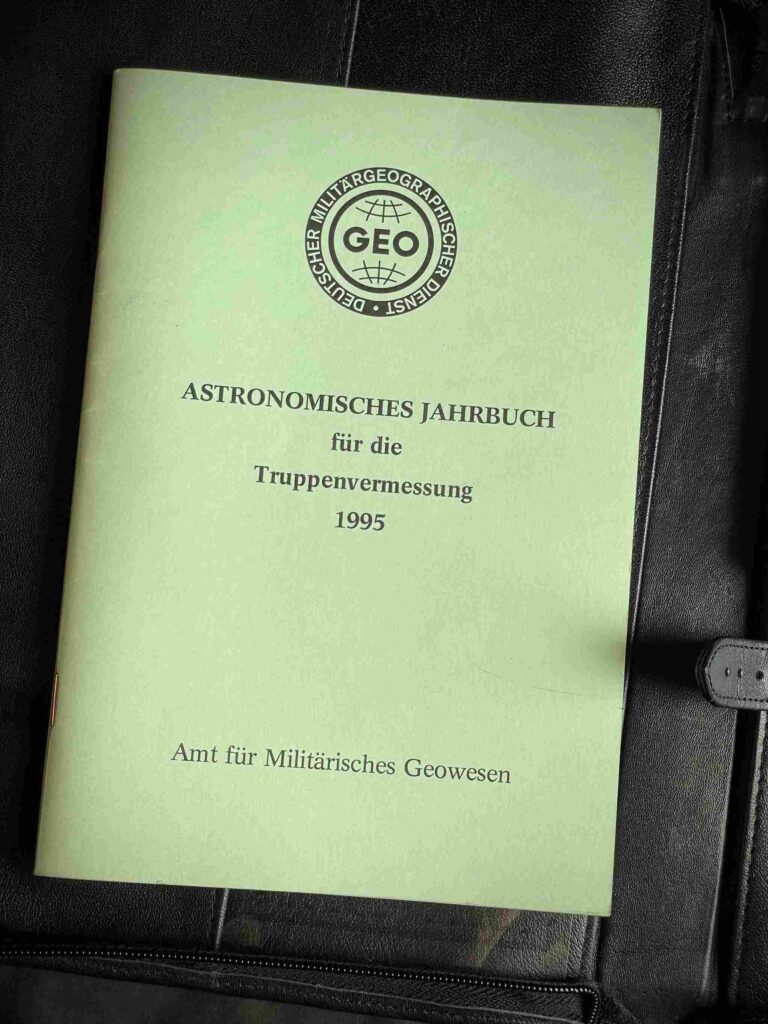
• The Astronomical Yearbook (Astronomisches Jahrbuch für die Truppenvermessung 1995), issued by the Amt für Militärisches Geowesen (Office of Military Geosciences), contained tables for sidereal time conversion, moon phases, and stellar coordinates.
• The instruction manual (ZDV 7/8, 1969 edition) outlined astronomical orientation using a theodolite—detailing how sidereal time and celestial positions were to be applied in field triangulation.
• The star finder and slide rule allowed the user to calculate azimuth and altitude of specific celestial bodies, while the rotating star map wheel made it possible to align visible constellations with the chronograph’s time indication.
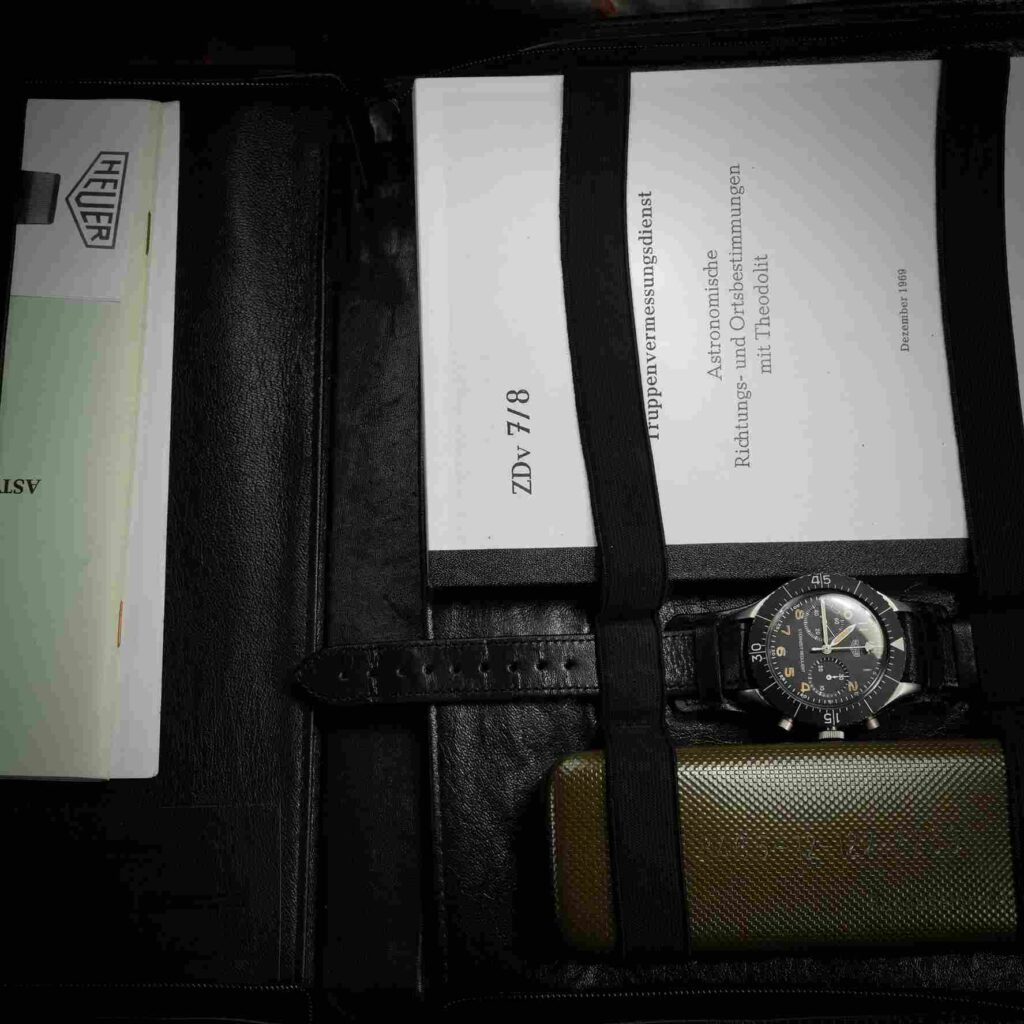
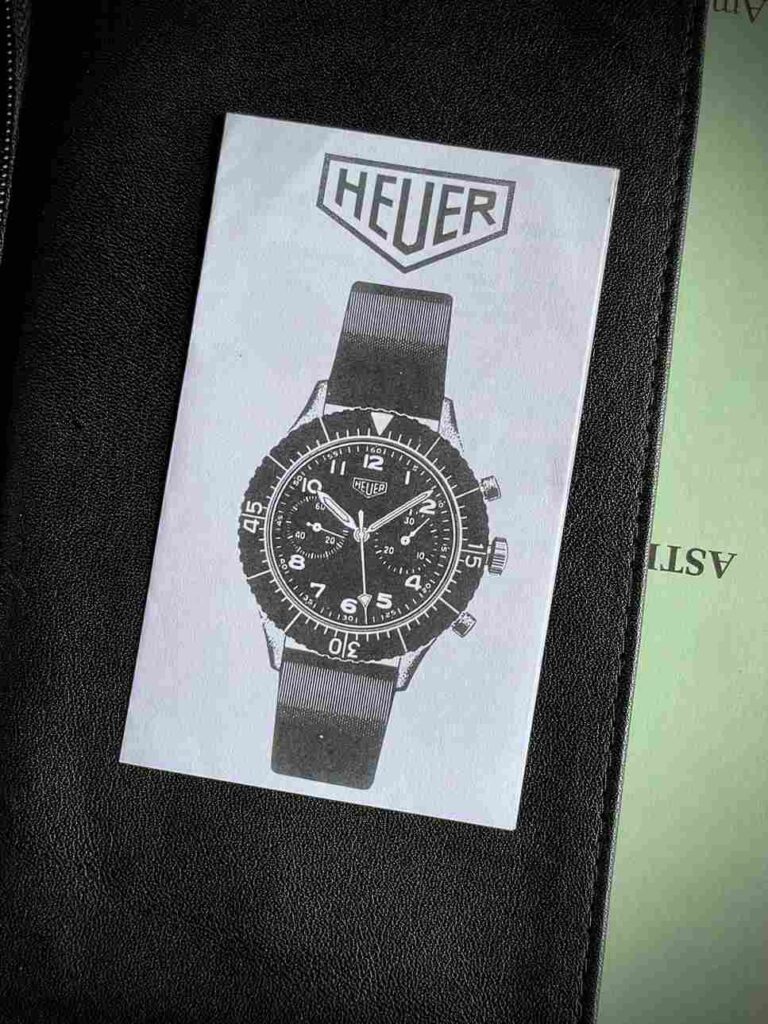
The chronograph`s instructions booklet.
The Bund-issue protective glasses and case (NSN 8465-12 127-2258) shielded the user’s eyes from glare during night observations.


Together, these artifacts form a complete, historically coherent ensemble—a self-contained astronomical navigation kit, of which very few survive intact today.
For collectors, such completeness transforms a rare watch into a fully documented scientific instrument of the Cold War era.
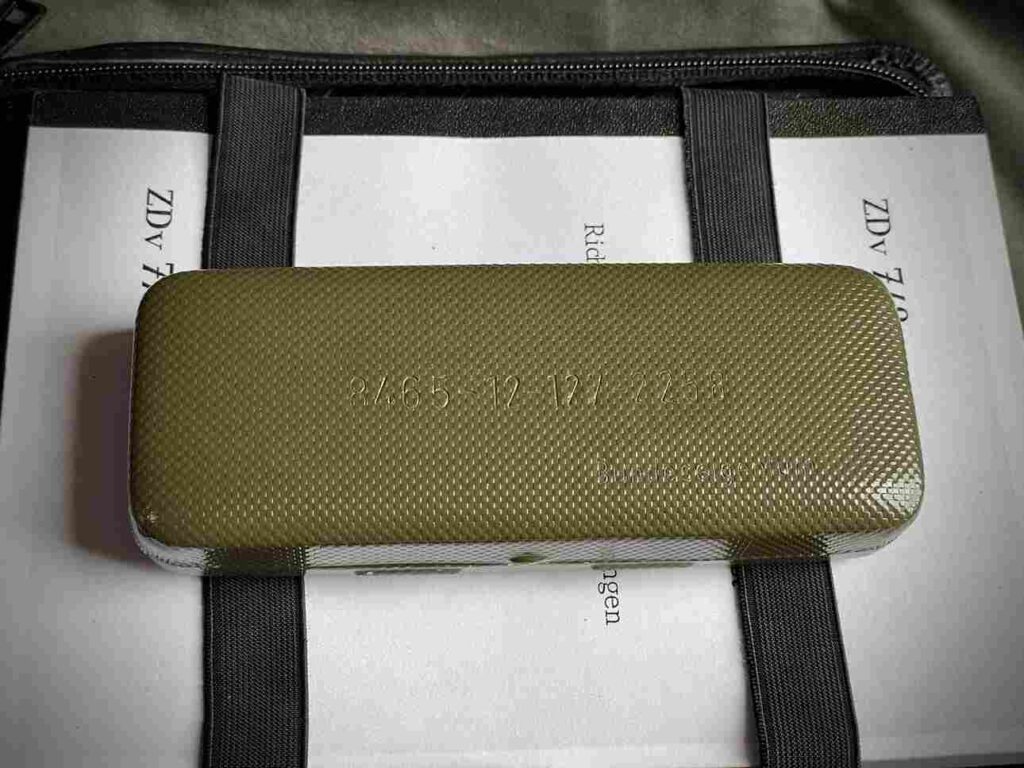

The watch is fitted with its original Bundeswehr leather strap (NSN 6645-12-145-6415), complete with the correct steel clasp, its a very recogniseable and well—made strap which harmonizes with the watch’s utilitarian aesthetic and adds to its authenticity.
Rarity and Collectability
Because of its limited production and highly specialized purpose, the Heuer Bundeswehr Sternzeit Reguliert bridges three domains rarely linked: astronomy, military artillery science, and watchmaking.
Its rarity is matched only by its conceptual significance—a wristwatch regulated to the movement of the stars.
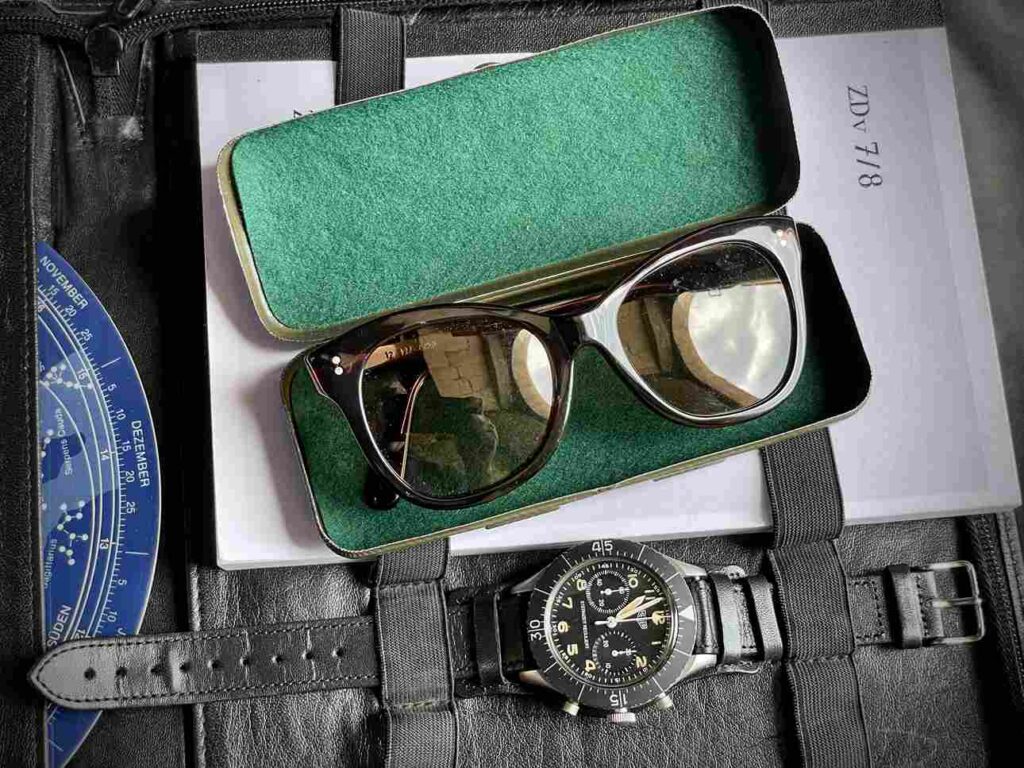
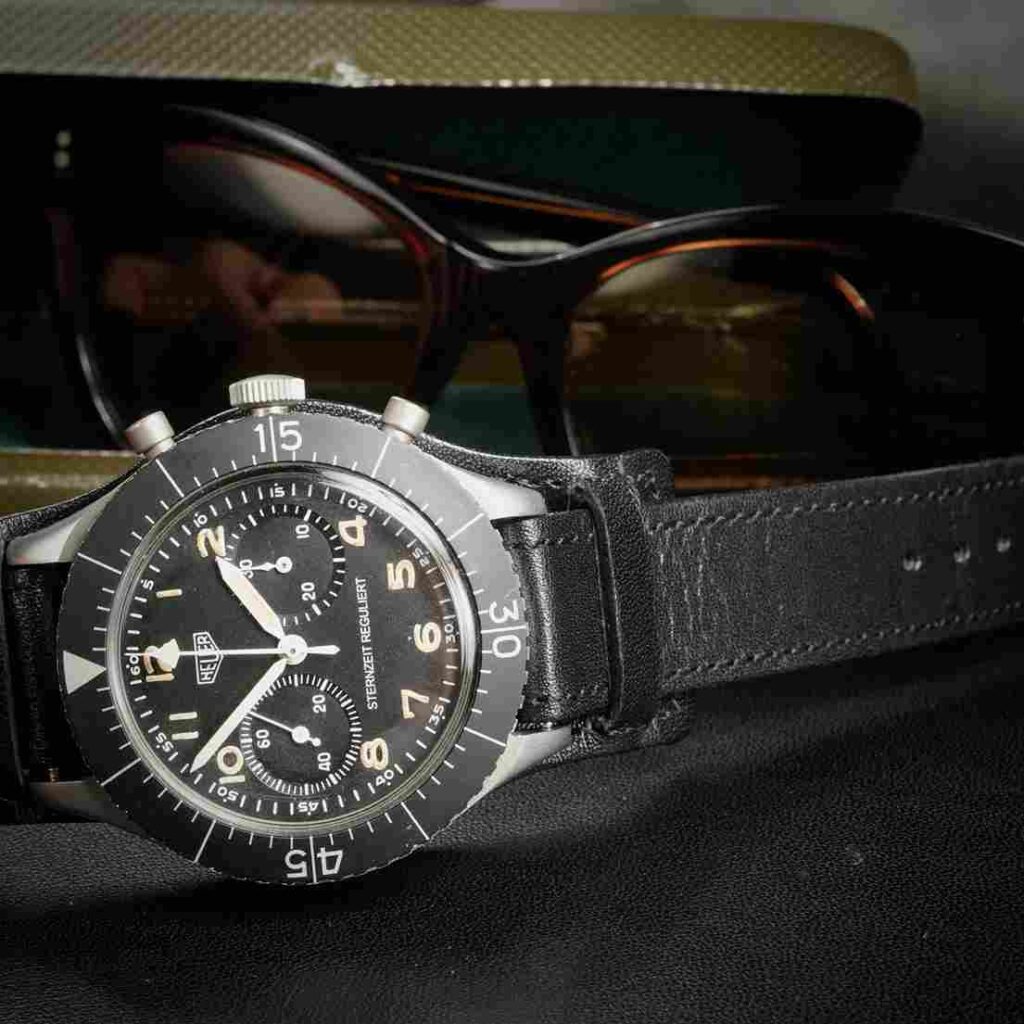
Few timepieces embody such a direct relationship between mechanical horology and scientific measurement. The survival of complete full sets, with all Bundeswehr-issued accessories, is exceedingly uncommon.
This Heuer Bundeswehr Sternzeit Reguliert ref. 1551SGSZ is more than a chronograph; it is a reminder of an era when analog calculation met celestial navigation. Every component—from its Valjoux 230 flyback calibre to its sidereal regulation and complete Bundeswehr documentation— tells a story of precision and purpose, the Sternzeit Reguliert is one of the most intellectually and historically compelling chronographs ever produced.
